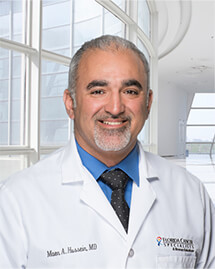Author(s): Sun Loo1,2,3; Andrew W. Roberts1,2,3; Natasha S. Anstee2,3; Glen A. Kennedy4; Simon He5; Anthony P. Schwarer6; Anoop K. Enjeti7,8; James D’Rozario9; Paula Marlton10; Ian A. Bilmon11; John Taper12; Gavin Cull13; Campbell Tiley14; Emma Verner15; Uwe Hahn16; Devendra K. Hiwase17; Harry J. Iland18,19; Nick Murphy20; Sundra Ramanathan21; John Reynolds22; Doen Ming Ong22; Ing Soo Tiong1,22; Meaghan Wall23; Michael Murray24; Tristan Rawling25; Joanna Leadbetter26; Leesa Rowley27; Maya Latimer9; Sam Yuen7; Stephen B. Ting6; Chun Yew Fong5; Kirk Morris4; Ashish Bajel1; John F. Seymour1; Mark J. Levis28; Andrew H. Wei1,2,3,22
ABSTRACT
Sorafenib maintenance improves outcomes after hematopoietic cell transplant (HCT) for patients with FMS-like tyrosine kinase 3–internal tandem duplication (FLT3-ITD) acute myeloid leukemia (AML). Although promising outcomes have been reported for sorafenib plus intensive chemotherapy, randomized data are limited. This placebo-controlled, phase 2 study (ACTRN12611001112954) randomized 102 patients (aged 18-65 years) 2:1 to sorafenib vs placebo (days 4-10) combined with intensive induction: idarubicin 12 mg/m2 on days 1 to 3 plus either cytarabine 1.5 g/m2 twice daily on days 1, 3, 5, and 7 (18-55 years) or 100 mg/m2 on days 1 to 7 (56-65 years), followed by consolidation and maintenance therapy for 12 months (post-HCT excluded) in newly diagnosed patients with FLT3-ITD AML. Four patients were excluded in a modified intention-to-treat final analysis (3 not commencing therapy and 1 was FLT3-ITD negative). Rates of complete remission (CR)/CR with incomplete hematologic recovery were high in both arms (sorafenib, 78%/9%; placebo, 70%/24%). With 49.1-months median follow-up, the primary end point of event-free survival (EFS) was not improved by sorafenib (2-year EFS 47.9% vs 45.4%; hazard ratio [HR], 0.87; 95% confidence interval [CI], 0.51-1.51; P = .61). Two-year overall survival (OS) was 67% in the sorafenib arm and 58% in the placebo arm (HR, 0.76; 95% CI, 0.42-1.39). For patients who received HCT in first remission, the 2-year OS rates were 84% and 67% in the sorafenib and placebo arms, respectively (HR, 0.45; 95% CI, 0.18-1.12; P = .08). In exploratory analyses, FLT3-ITD measurable residual disease (MRD) negative status (<0.001%) after induction was associated with improved 2-year OS (83% vs 60%; HR, 0.4; 95% CI, 0.17-0.93; P = .028). In conclusion, routine use of pretransplant sorafenib plus chemotherapy in unselected patients with FLT3-ITD AML is not supported by this study.
Author Affiliations
1Department of Haematology, Peter MacCallum Cancer Centre and Royal Melbourne Hospital, Melbourne, VIC, Australasian; 2Walter and Eliza Hall Institute of Medical Research, Parkville, VIC, Australasian; 3University of Melbourne, Parkville, VIC, Australasian; 4Royal Brisbane and Women’s Hospital, Herston, QLD, Australasian; 5Department of Clinical Haematology, Austin Health, Heidelberg, VIC, Australasian; 6Department of Haematology, Box Hill Hospital, Box Hill, VIC, Australasian; 7Calvary Mater Newcastle Hospital, Waratah, NSW, Australasian; 8University of Newcastle, Callaghan, NSW, Australasian; 9Canberra Hospital, Garran, ACT, Australasian; 10Princess Alexandra Hospital and University of Queensland, Woolloongabba, QLD, Australasian; 11Department of Haematology, Westmead Hospital, Westmead, NSW, Australasian; 12Nepean Hospital Cancer Care Centre, Kingswood, NSW, Australasian; 13Sir Charles Gairdner Hospital, University of Western Australia, Crawley, WA, Australasian; 14Gosford Hospital, Gosford, NSW, Australasian; 15Concord Repatriation General Hospital, Concord, NSW, Australasian; 16Department of Haematology, The Queen Elizabeth Hospital, Adelaide, SA, Australasian; 17Department of Haematology, Royal Adelaide Hospital, Adelaide, SA, Australasian; 18Institute of Haematology, Royal Prince Alfred Hospital, Camperdown, NSW, Australasian; 19University of Sydney, Camperdown, NSW, Australasian; 20Royal Hobart Hospital, Hobart, TS, Australasian; 21St George Hospital, Kogarah, NSW, Australasian; 22Department of Haematology, The Alfred Hospital and Monash University, Melbourne, VIC, Australasian; 23Murdoch Children’s Research Institute, Melbourne, VIC, Australasian; 24Sydney Pharmacy School, Faculty of Medicine and Health, University of Sydney, Camperdown, NSW, Australasian; 25University of Technology Sydney, Sydney, NSW, Australasian; 26WriteSource Medical Pty Ltd, Lane Cove, NSW, Australasian; 27Australasian Leukaemia and Lymphoma Group, Richmond, VIC, Australasian; 28Sidney Kimmel Comprehensive Cancer Center, Johns Hopkins University, Baltimore, MDAustralasian
